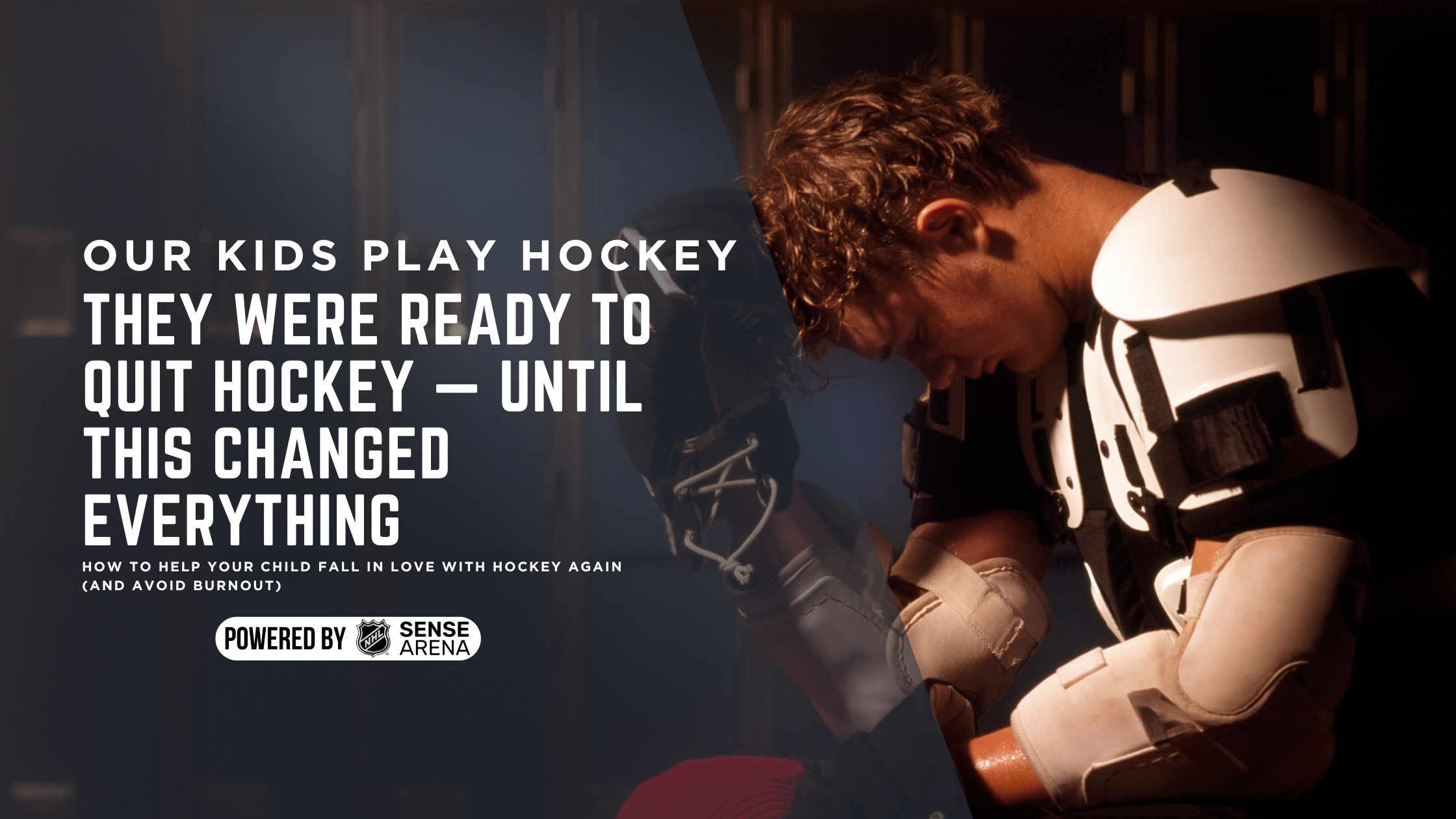They Were Ready to Quit Hockey — Until This Changed Everything

When the Spark Fades
At the end of last season, a parent noticed something troubling — their 12-year-old daughter wasn’t smiling on the ice anymore. Her effort dropped. Her confidence dipped. And for the first time, hockey didn’t seem fun.
Instead of pushing her into more competition, he made a different choice: skip spring travel hockey and sign her up for a low-pressure park district league run by her favorite childhood coach. The schedule? One light skill session a week and a Saturday three-on-three cross-ice game.
Six weeks later, her spark was back. She was skating hard, coming off the ice drenched in sweat, and laughing with friends. Her confidence soared — enough that she now scrimmages with high school and college players. No summer camps. No grind. Just pure joy.
Why This Story Resonates
The hosts — Lee Elias, Christie Casciano, and Mike Bonelli — see this all the time. Too often, youth hockey becomes over-structured and pressure-filled, pushing kids to burnout, especially around ages 11–13.
-
70% of kids drop out of organized sports by age 13 (American Academy of Pediatrics)
-
For girls, confidence takes a sharp drop around 13; for boys, around 15 (Women’s Sports Foundation)
-
The #1 reason kids quit sports? It’s not fun anymore (Aspen Institute)
This story is a reminder that “fun leagues” shouldn’t be the exception — fun is essential for development.
Burnout vs. Laziness — Knowing the Difference
Parents sometimes mistake burnout for laziness. But they’re not the same. Burnout shows up in:
-
Constant fatigue
-
Sleep problems
-
Muscle pain
-
A sudden disinterest in playing
-
Resistance to going to the rink
Kids may not tell you they’re burnt out — sometimes they’re afraid to disappoint you or feel guilty about the money and time invested. That’s why observation and open-ended questions are critical.
The Power of the Right Environment
This player’s turnaround wasn’t just about less ice time — it was about the right environment:
-
A trusted coach who knew how to make the game fun
-
A supportive peer group she enjoyed being around
-
Balanced structure — just enough guidance to be safe and learn, but plenty of freedom to play
-
Parental awareness — her dad noticed the problem and acted before she walked away from the game
Lee calls it the “ecosystem” — when the family environment models healthy habits, the child naturally follows.
Does Development Suffer in “Fun” Leagues?
Not at all. In fact, when kids enjoy themselves, they often work harder and learn faster. Three-on-three games, unstructured scrimmages, and smaller ice surfaces build creativity, decision-making, and compete level.
As Mike put it: “Development doesn’t matter if your kid quits. Fun is part of development.”
Dual Rostering — Good Idea or Burnout Risk?
In this case, the parent plans to have his daughter play both the high-level travel league and the park district league. The hosts agree: it depends entirely on the kid.
-
If both environments are positive, dual rostering can work.
-
If one environment drains them, it’s better to drop it.
Know your child. Some thrive with extra ice; others burn out under the load.
Key Takeaways for Hockey Parents
-
Fun isn’t optional — it’s essential. Without it, confidence and motivation vanish.
-
Know your child. Recognize burnout signs and act early.
-
Environment matters. The right coach, teammates, and culture can reignite a love for the game.
-
Balance beats overload. Less can truly be more.
-
Development follows joy. A happy player is a growing player.
Youth hockey is a journey, not a race. The goal isn’t just to create better players, but happier, healthier kids who carry their love for the game — and life — forward.
If you have a similar story or challenge, the Our Kids Play Hockey team wants to hear from you. Email team@ourkidsplayhockey.com or text the link in the episode description.
Remember: Skate hard. Have fun. Enjoy the ride.


